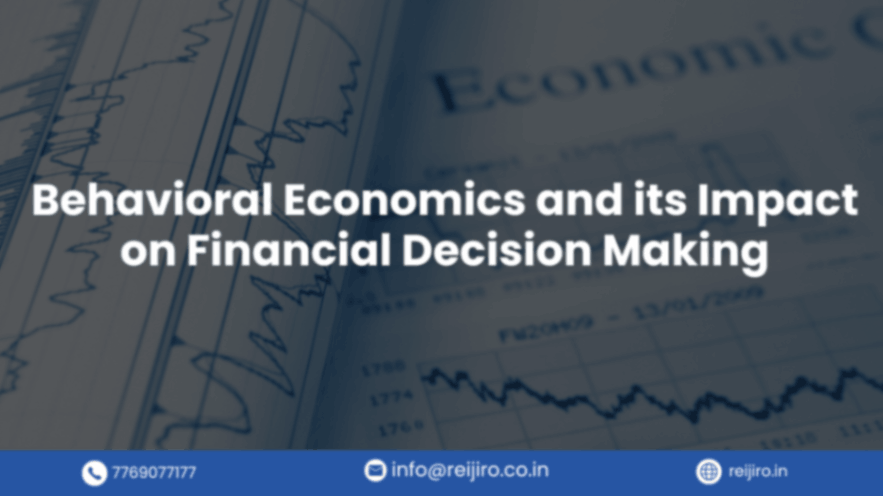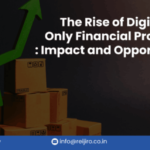Behavioral Economics and its Impact on Financial Decision Making
In the realm of economics and finance, traditional theories often assume that individuals make rational and logical decisions when it comes to managing their finances. However, the field of behavioral economics challenges this assumption by recognizing that human behavior is often influenced by psychological and emotional factors that can lead to less-than-optimal financial choices. This blog delves into the world of behavioral economics, exploring its key concepts, real-world examples, and the profound impact it has on financial decision-making.
Traditional Economics vs. Behavioral Economics:
Traditional economic theories are built on the assumption that individuals are rational decision-makers, always seeking to maximize their utility. However, behavioral economics challenges this notion by highlighting the ways in which psychological biases and emotions influence our decisions.
The Emergence of Behavioral Economics:
The rise of behavioral economics can be attributed to the pioneering work of psychologists like Daniel Kahneman and Amos Tversky. Their research laid the foundation for understanding how people deviate from rational decision-making and how these deviations impact financial choices.
Foundations of Behavioral Economics:
Human Cognitive Biases and Heuristics:
Cognitive biases, such as confirmation bias and overconfidence, lead individuals to make decisions that are not entirely rational. Heuristics, or mental shortcuts, often simplify decision-making but can also lead to errors.
Prospect Theory: The Role of Loss Aversion:
Prospect theory explains that individuals feel the pain of loss more intensely than the pleasure of gain. This leads to risk-averse behavior and influences investment choices.
Anchoring and Adjustment Bias:
Anchoring occurs when individuals rely heavily on the first piece of information encountered (the anchor) when making decisions. This bias can impact how we perceive the value of financial products or investments.
Behavioral Economics in Financial Decision Making:
Savings and Retirement Planning:
Behavioral economics sheds light on why people struggle to save for the future. The present bias, which favors immediate rewards over long-term gains, often hinders retirement planning.
Investment Choices and Herding Behavior:
Herding behavior, driven by social influence and fear of missing out, can lead to investment bubbles and crashes. Behavioral economics helps explain market phenomena that traditional theories overlook.
Consumer Spending and Irrational Exuberance:
The allure of sales, discounts, and limited-time offers can prompt irrational spending. Behavioral economics uncovers the emotional triggers that influence consumer choices.
Real-World Examples:
The Power of Defaults: Nudging Behavior:
Defaults have a significant impact on decision-making. By strategically setting defaults, policymakers and companies can nudge individuals toward desirable financial behaviors.
The Impact of Framing on Financial Choices:
The way information is presented (framed) can drastically alter decisions. Behavioral economics examines how framing affects investment decisions, savings goals, and risk tolerance.
Behavioral Economics in Marketing and Advertising:
Companies leverage behavioral insights to create persuasive marketing campaigns that appeal to consumers’ emotions and biases, driving purchasing decisions.
Bounded Rationality and Decision Paralysis:
Analysis Paralysis: The Overwhelm of Choices:
An abundance of choices can lead to decision paralysis, where individuals struggle to make decisions due to the complexity of options.
Decision Fatigue and Impulse Buying:
Constant decision-making can deplete mental resources, leading to impulsive choices. This phenomenon is exploited by marketers to encourage impulse buying.
Behavioral Economics and Public Policy:
Nudge Theory and Policy Design:
Nudge theory suggests that subtle changes in how choices are presented can influence decisions without removing individual autonomy. Governments use nudge techniques to promote desired behaviors.
Encouraging Healthy Financial Habits:
Behavioral economics informs policies aimed at promoting financial literacy, encouraging saving, and discouraging harmful financial behaviors like predatory lending.
Overcoming Behavioral Biases:
Financial Education and Awareness:
Raising awareness about cognitive biases and their impact on financial choices can empower individuals to make more informed decisions.
Digital Tools for Guiding Financial Choices:
Fintech applications leverage behavioral insights to provide personalized recommendations, budgeting tools, and investment guidance.
Mindful Decision-Making Techniques:
Practices like mindfulness can help individuals become more aware of their emotional responses and biases, leading to more deliberate financial decisions.
Ethical Considerations:
Balancing Nudging with Autonomy:
Ethical questions arise when using nudges to influence behavior. Striking a balance between guiding individuals and respecting their autonomy is crucial.
Transparency and Informed Consent:
Financial institutions must be transparent about the use of behavioral insights and ensure customers are fully informed and consenting to the strategies employed.
Implications for Financial Institutions:
Designing User-Centric Financial Products:
Understanding customer biases enables banks to design products that align with customers’ preferences, leading to better user experiences.
Personalized Financial Recommendations:
Banks can leverage behavioral data to offer personalized financial advice and solutions that address customers’ unique needs.
Future Directions and Challenges:
Advances in Behavioral Economics Research:
Ongoing research continues to uncover new biases and heuristics, providing deeper insights into the complexities of human decision-making.
Addressing Cultural and Contextual Differences:
It may have varying implications across different cultures and socio-economic contexts, warranting a nuanced approach to implementation.
Conclusion:
Embracing Behavioral Economics: Enhancing Financial Well-Being:
underscores the need for a more comprehensive understanding of human behavior in financial decision-making. By acknowledging and addressing biases, both individuals and institutions can make more informed choices, leading to improved financial well-being and a more resilient financial landscape.
embracing behavioral economics signifies an evolution in our understanding of the human decision-making process. It marks a departure from traditional economic models and an embrace of the intricacies that shape our financial choices. By integrating psychological insights into our financial journeys, we take a significant stride toward enhancing financial well-being – not just for ourselves, but for the collective prosperity of society as a whole. In this exciting convergence of psychology and economics, we find the potential to create a more prosperous, empathetic, and resilient financial landscape.
In the grand narrative of economics, the emergence of behavioral economics serves as a turning point. It reminds us that economic decisions are not detached from the human experience but deeply intertwined with our psychology, emotions, and social context. This field redefines economics as a human-centric science, shifting the focus from abstract theories to the intricate realities of human decision-making. As behavioral economics continues to evolve, its impact on policy, business, and individual well-being solidifies its place as a transformative force that celebrates the richness of our human nature.



